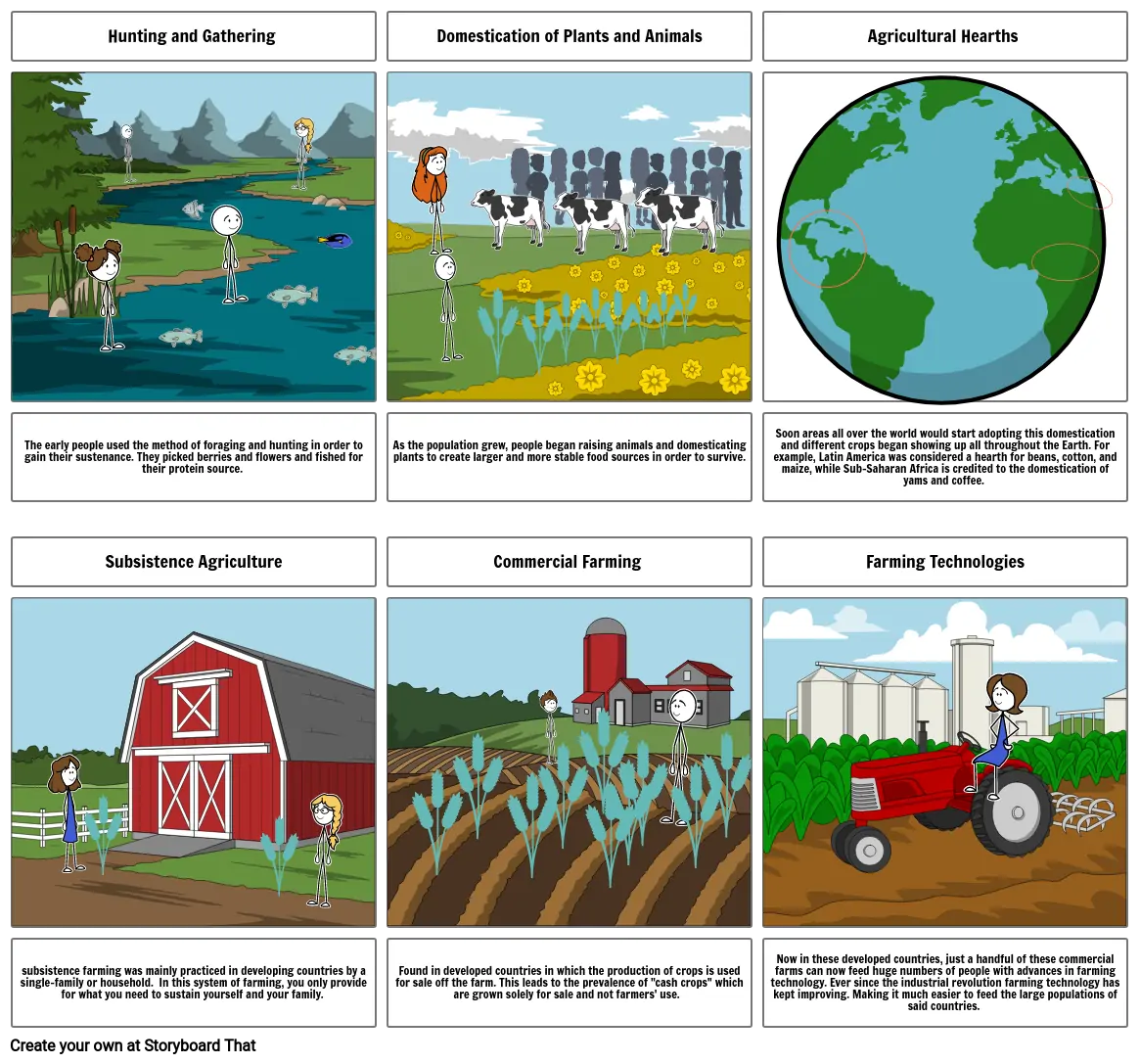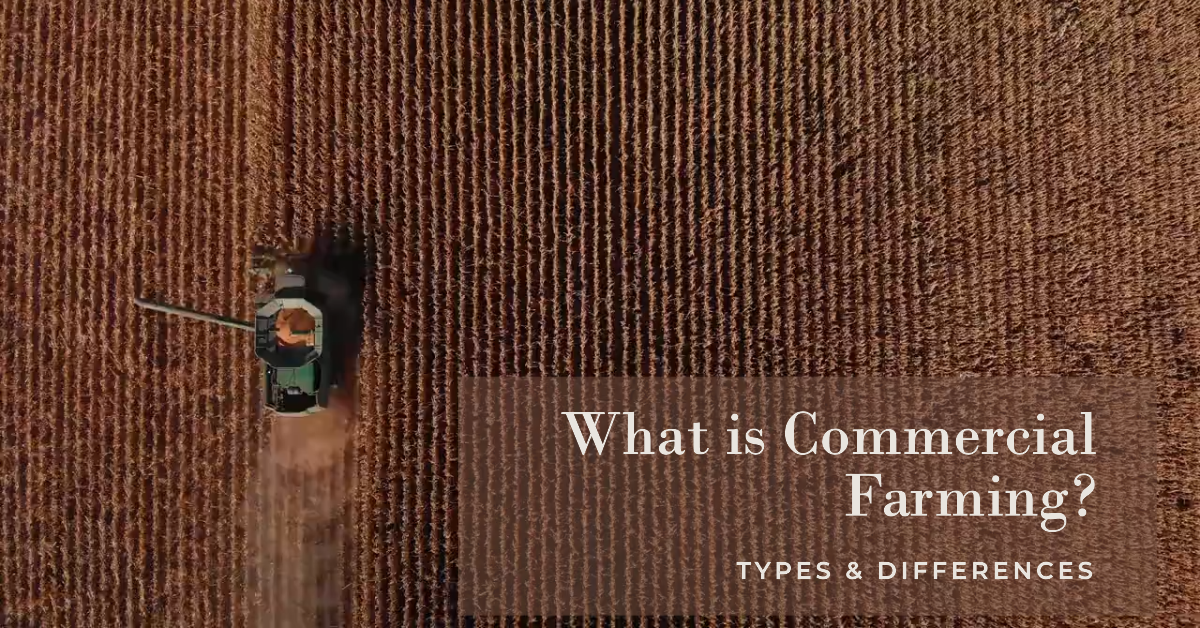Discovering the Key Differences In Between Commercial Farming vs Subsistence Farming
Discovering the Key Differences In Between Commercial Farming vs Subsistence Farming
Blog Article
Discovering the Distinctions In Between Commercial Farming and Subsistence Farming Practices
The dichotomy between business and subsistence farming practices is marked by varying objectives, operational scales, and source use, each with profound ramifications for both the setting and society. Industrial farming, driven by revenue and performance, frequently employs sophisticated modern technologies that can bring about considerable ecological problems, such as dirt destruction. Conversely, subsistence farming emphasizes self-sufficiency, leveraging standard approaches to maintain home needs while supporting community bonds and cultural heritage. These contrasting techniques elevate fascinating questions about the equilibrium in between financial growth and sustainability. Just how do these different methods shape our globe, and what future directions might they take?
Economic Goals
Financial goals in farming methods typically determine the approaches and scale of procedures. In industrial farming, the key financial purpose is to take full advantage of earnings. This calls for a focus on effectiveness and productivity, accomplished through advanced technologies, high-yield plant varieties, and extensive use of chemicals and plant foods. Farmers in this version are driven by market demands, intending to generate large quantities of products available in international and nationwide markets. The emphasis is on achieving economies of range, guaranteeing that the expense each result is reduced, thus enhancing profitability.
In comparison, subsistence farming is predominantly oriented in the direction of meeting the instant needs of the farmer's family members, with excess production being minimal - commercial farming vs subsistence farming. While industrial farming is profit-driven, subsistence farming is focused around sustainability and durability, mirroring a basically various set of economic imperatives.

Scale of Procedures
The difference in between business and subsistence farming becomes especially noticeable when thinking about the range of operations. The scale of business farming enables for economic climates of range, resulting in lowered expenses per device through mass manufacturing, enhanced effectiveness, and the capacity to spend in technical developments.
In plain contrast, subsistence farming is normally small-scale, concentrating on producing just enough food to satisfy the immediate demands of the farmer's family members or local neighborhood. The land area included in subsistence farming is often restricted, with less accessibility to contemporary innovation or automation.
Resource Utilization
Business farming, defined by large operations, typically utilizes advanced innovations and automation to enhance the use of resources such as land, water, and plant foods. Accuracy agriculture is progressively adopted in commercial farming, using information analytics and satellite technology to keep an eye on crop wellness and maximize resource application, more enhancing yield and resource efficiency.
In contrast, subsistence farming runs on a much smaller range, largely to meet the instant requirements of the farmer's home. Source application in subsistence farming is often restricted by financial constraints and a dependence on traditional methods.
Ecological Influence

Alternatively, subsistence farming, exercised on a smaller range, generally uses typical strategies that are much more attuned to the surrounding setting. Crop turning, intercropping, and natural fertilization are common, advertising dirt health and minimizing the demand for synthetic inputs. While subsistence farming normally has a reduced ecological footprint, it is not without challenges. Over-cultivation and bad land administration can bring about soil disintegration and logging sometimes.
Social and Cultural Implications
Farming practices are deeply intertwined with the see post social and social material of communities, influencing and reflecting their worths, customs, and economic structures. In subsistence farming, the emphasis gets on cultivating adequate food to satisfy the instant requirements of the farmer's family members, frequently promoting a solid feeling of community and shared obligation. Such techniques are deeply rooted in local customs, with knowledge gave via generations, therefore preserving social heritage and enhancing common connections.
Alternatively, industrial farming is largely driven by market demands and productivity, typically resulting in a change in the direction of monocultures and large procedures. This technique can cause the erosion try this of standard farming methods and social identities, as local customs and understanding are replaced by standardized, commercial techniques. Additionally, the concentrate on efficiency and profit can often diminish the social cohesion found in subsistence areas, as economic deals replace community-based exchanges.
The duality in between these farming practices highlights the broader social effects of agricultural choices. While subsistence farming sustains cultural continuity and community interdependence, industrial farming lines up with globalization and financial growth, typically at the cost of typical social frameworks and multiculturalism. commercial farming vs subsistence farming. Balancing these facets continues to be an essential obstacle for lasting agricultural advancement
Conclusion
The evaluation of industrial and subsistence farming methods exposes substantial distinctions in objectives, scale, resource use, environmental effect, and social implications. Business farming focuses on profit and performance through large operations and advanced innovations, commonly at the cost of environmental sustainability. On the other hand, subsistence farming emphasizes self-sufficiency, making use of traditional methods and neighborhood sources, consequently advertising cultural preservation and area cohesion. These contrasting methods underscore the intricate interaction in between financial growth and the requirement for environmentally lasting and socially inclusive farming techniques.
The duality between business and subsistence farming methods is noted by varying objectives, functional scales, and resource application, each with profound implications for both the environment and society. While industrial farming is profit-driven, subsistence farming is helpful resources focused around sustainability and durability, mirroring a basically various set of economic imperatives.
The distinction in between business and subsistence farming comes to be particularly noticeable when considering the scale of operations. While subsistence farming sustains cultural connection and neighborhood connection, industrial farming lines up with globalization and financial growth, usually at the price of traditional social structures and social variety.The exam of commercial and subsistence farming methods reveals significant differences in objectives, range, resource use, ecological effect, and social implications.
Report this page